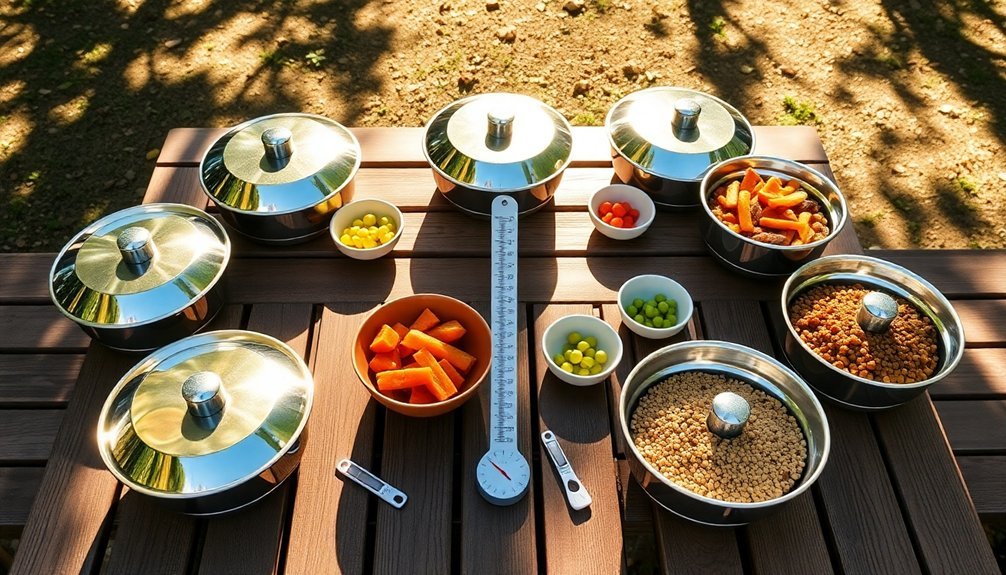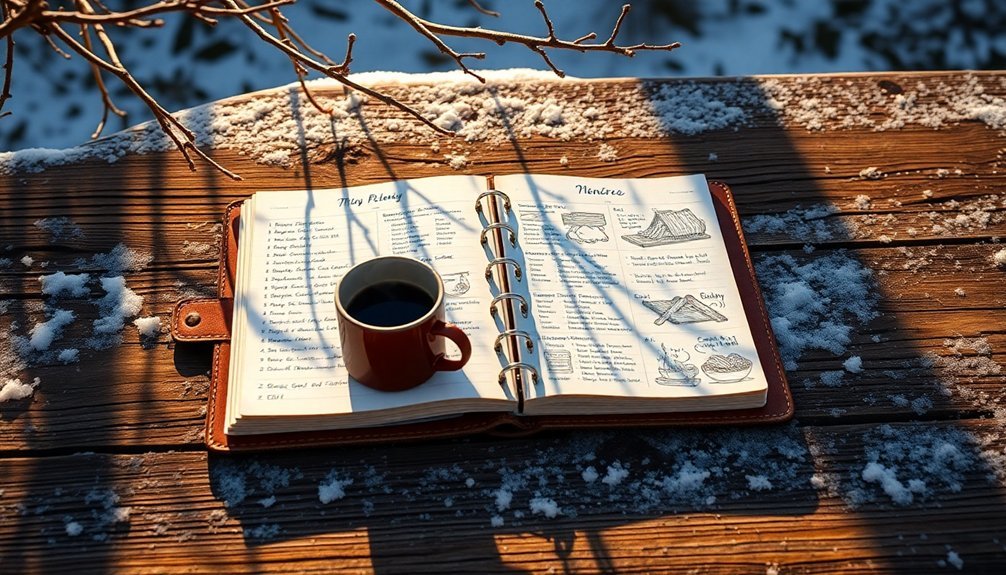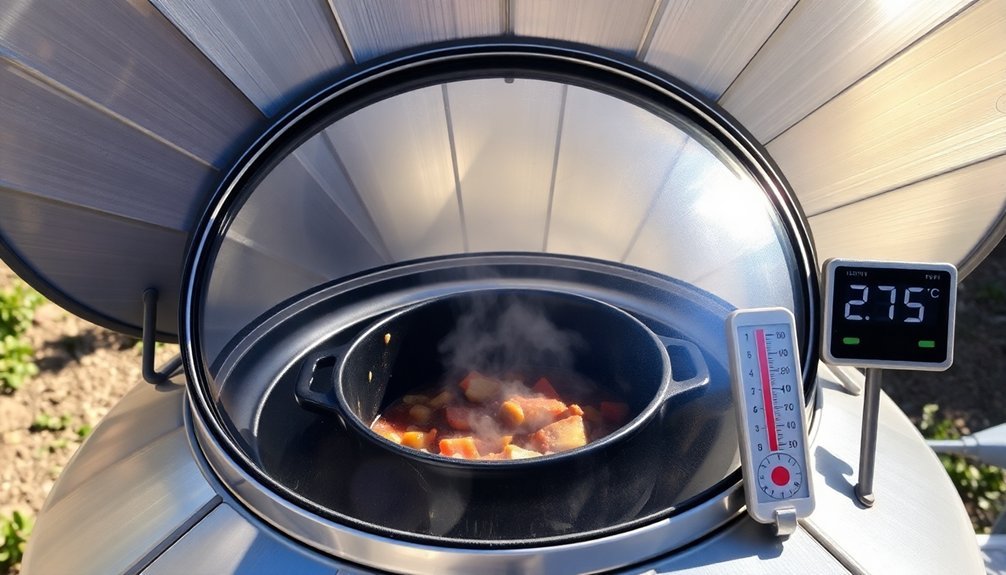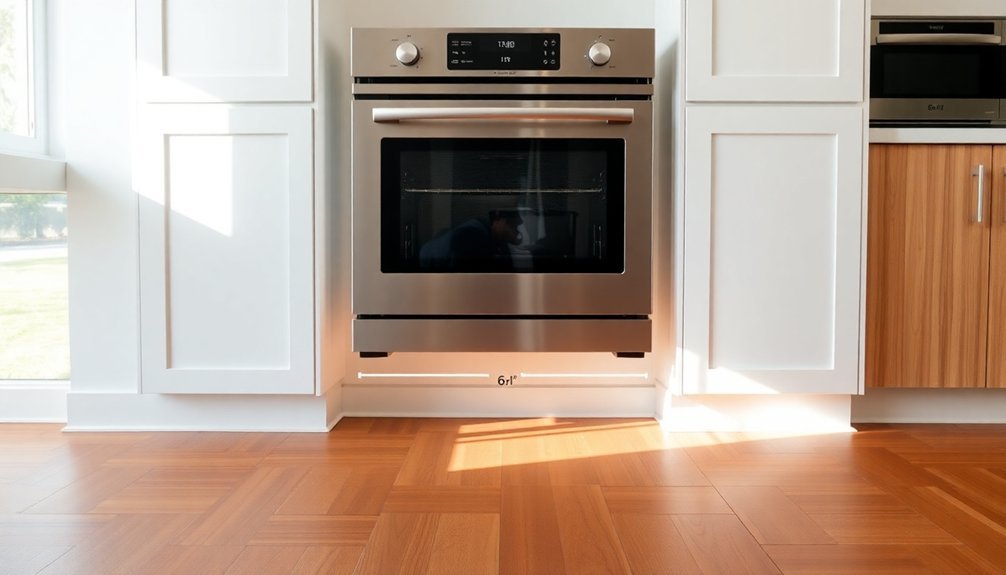You'll find success with these three weekly outdoor cooking plans tailored to different seasons. For summer, start with light breakfasts like solar-baked granola, followed by quick-cooking rice bowls for lunch and slow-cooked stews for dinner. Spring meals work best between 11 AM and 3 PM – think pre-prepped vegetables for stir-fries, foil-packed fish, and one-pot pasta dishes. Winter requires heartier fare, so plan calorie-dense meals like thick soups, baked potatoes, and Dutch oven casseroles. Keep backup cooking methods handy and adjust your schedule based on weather conditions. These seasonal strategies will transform your outdoor cooking experience.
Summer Solar Cooking Schedule

When planning your summer solar cooking schedule, success hinges on tracking weather conditions and adapting your meal plans accordingly.
On fully sunny days, you'll want to maximize cooking time by preparing longer-cooking items like chickpeas in the morning and bread in the afternoon. The evacuated tube design makes this method highly efficient for all-day cooking. Check the forecast daily to plan ahead for dishes that need extended cooking periods.
For partially overcast days, stick to quick-cooking foods like white rice, potatoes, or lentils. Remember to preheat your solar cooker for 30 minutes and rotate it every half hour to follow the sun.
You'll need to adjust your schedule based on temperature fluctuations – small portions cook similarly to conventional methods, but larger meals take longer. For ideal results, limit quantities (like using max 1 cup of pre-soaked chickpeas) and keep backup cooking methods ready for rainy days.
Spring Slow Solar Meals
As spring temperatures begin to warm, your solar cooking adventures can flourish with hearty, slow-cooked meals that utilize the available daylight. Using black cooking pots helps maximize heat absorption from the sun's rays for efficient meal preparation.
You'll want to start your cooking between 11:00 am and 3:00 pm when the sun's energy is strongest, using a box or panel cooker for consistent, even heating. Remember to track the sun's position and confirm your setup includes dark-colored pots with clear lids.
- Pre-heat your solar cooker by 10:00 am, allowing enough time to reach ideal temperatures for slow-cooking spring vegetables and tender meats.
- Use less water than traditional recipes since your covered pots will retain moisture effectively.
- Monitor your cooker's temperature with an oven thermometer, adjusting its position every hour to maintain steady heat between 150-300°F.
Winter Sun Kitchen Planning

Despite winter's shorter days and colder temperatures, you can still enjoy successful outdoor cooking by implementing a well-thought-out winter sun kitchen plan.
Start by setting up a protected cooking area with windbreaks and choosing efficient equipment like multi-fuel stoves and ceramic cookware.
You'll want to simplify your meal prep by focusing on one-pot recipes and foil-pack cooking methods. Pack calorie-dense foods to maintain energy levels throughout your winter camping experience.
Pre-cut vegetables and portion meats at home to minimize time spent in the cold.
Keep your menu planning straightforward by sticking to familiar recipes, and use insulated coolers to prevent food from freezing.
When grilling, preheat equipment slowly and keep lids closed to maintain heat.
Don't forget to wear heat-resistant gloves over thin liners for better dexterity while handling hot cookware and utensils.
Frequently Asked Questions
How Do You Protect Outdoor Cooking Equipment From Unexpected Rain?
You'll need to use waterproof covers for grills and equipment, set up a gazebo or canopy overhead, and store items in covered areas. Keep a tarp handy for quick protection during unexpected showers.
What Backup Cooking Methods Should I Have for Cloudy Days?
You'll want reliable backups like the Cloudy Day Cube Stove, which uses multiple fuels including twigs and charcoal. Keep can stoves, steeping jars, and hay box ovens ready for when solar cooking isn't possible.
Can Outdoor Cooking Equipment Be Safely Stored Outside Year-Round?
While you can store outdoor cooking equipment outside, it's not recommended. You'll need proper shelter, protective covers, and regular maintenance to prevent weather damage, rust, and pest issues throughout the year.
How Do You Keep Insects Away While Cooking Outdoors?
You can keep insects away while cooking outdoors by using repellents, installing fans, covering food, cleaning spills immediately, and timing your cooking when bugs are less active. Don't forget protective screens and netting.
What Are the Best Wind Protection Strategies for Outdoor Cooking?
Position your grill perpendicular to wind and use sturdy windscreens. You'll want to secure the cooking area near walls or natural barriers, and don't forget to anchor your equipment against strong gusts.
In Summary
You'll find these seasonal solar cooking schedules can transform your outdoor meal preparation throughout the year. Whether you're harnessing summer's intense rays, making use of spring's gentle warmth, or maximizing winter's limited sunlight, you've got options for sustainable cooking. Start with simple recipes and you'll soon master the art of solar cooking, saving energy while enjoying delicious meals in the great outdoors.





Leave a Reply